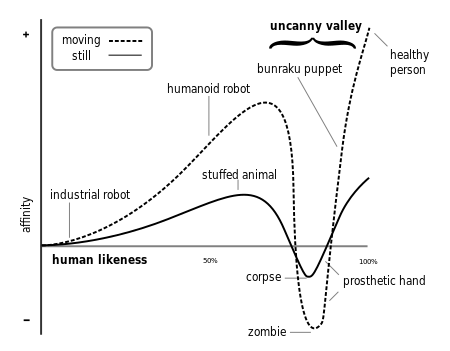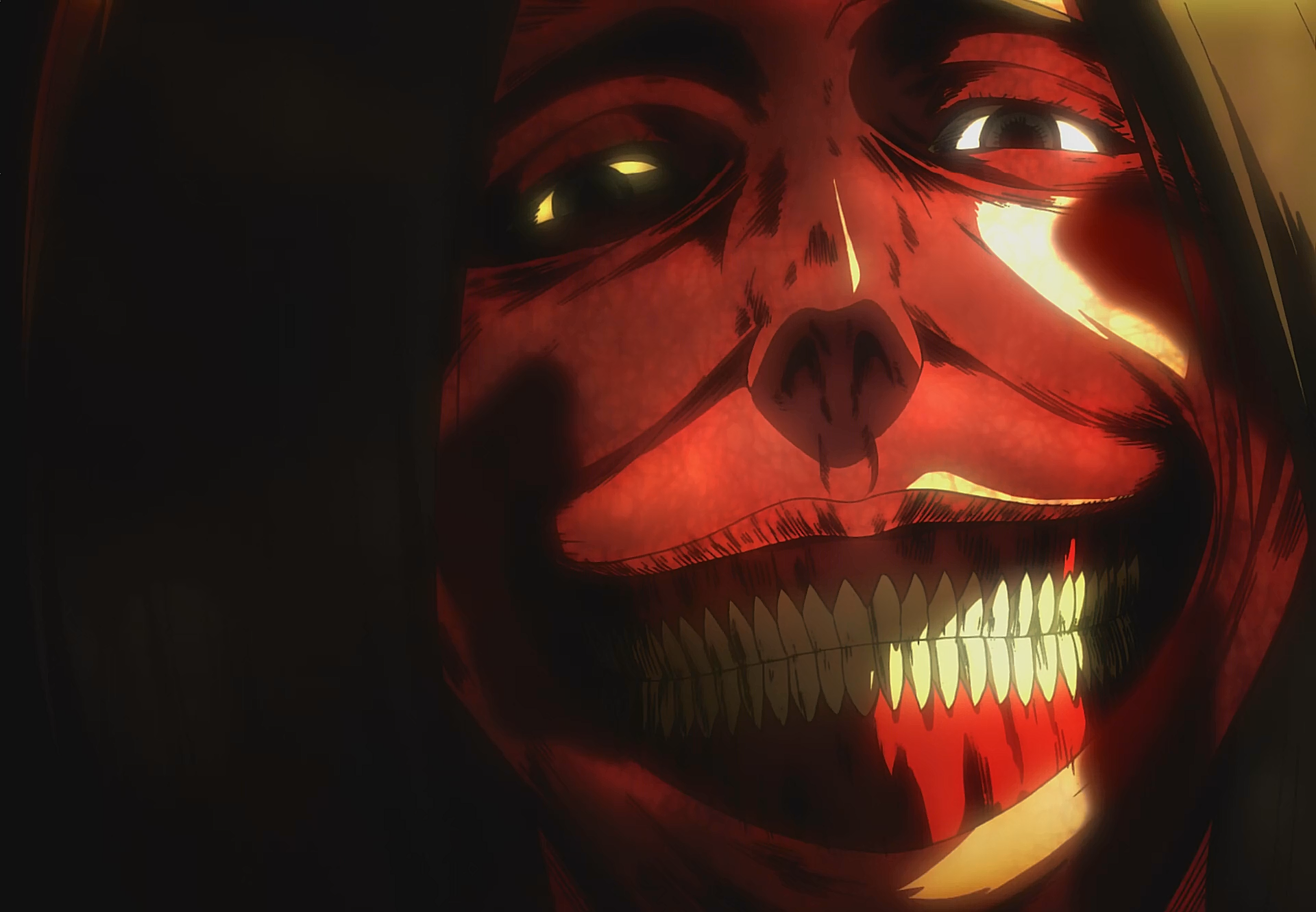The uncanny valley concept was identified by Masahiro Mori, a Japanese roboticist in 1970. 'The theory of uncanny valley is the closer you approach to making something artificially human the higher the level of revulsion occurs in the human observing' (Chen cited in Menache, 2011, pg. 51)
Menache points out that 'our brains are so well trained to know what a human is supposed to look like that something as small as a twitch in the eye or the wrong dilation of a pupil can make it all seem strange' (2011, pg.51)
However, most anime the characters are unrealistic compared to real humans (e.g. big eyes and perfect bodies) and are normally 2-D animated, but for those who are not accustomed to the anime and manga style in general, they might not understand the appeal of characters looking in such a way (e.g. big eyes, small mouths) and so have an uncanny valley reaction.
Us anime and manga fans can also experience the uncanny valley reaction in different way.
There are some instances out there where we may see a character or characters in an anime or manga unappealing because of our expectations of how anime and manga characters should look. If they look vastly different from the norm then we can be disturbed. Here are some examples:
Episode 9 of 'Mekakucity Actors' got quite the reaction when the creators chose to animate the what was supposed to be a cute and heartwarming montage using CGI models, making the character faces look very wrong... The sequence was luckily reanimated into 2-D for the Blu-ray DVD version:
The Forest God in the film 'Princess Mononoke' is also an example. A deer with a vaguely human like face and intense, staring eyes instead of a normal deer head:
Finally for something a little more subtle. Many aren't a fan of the stylistic choice to make the lips of the male characters in 'The Wallflower' more obvious and realistic, rather than having the simple and single line lips we are used to in most anime and manga:So, why do characters that look more human like creep us out? Angela Tinwell considers that 'A sense of dread of own one's death and morality have been intrinsically linked with the uncanny, so it may be that for a human-like character encapsulate what it means to be human, it cannot represent an ethereal immortality, but it too must be aware and contemplative of its own survival needs and inevitable death' (2015, pg. 200)
References:
Chen, J. cited in Menache, A. (2011) Understanding motion capture for computer animation. 2nd edn. Massachusetts, USA: Morgan Kaufmann
Menache, A. (2011) Understanding motion capture for computer animation. 2nd edn. Massachusetts, USA: Morgan Kaufmann
Tinwell, A. (2015) The Uncanny Valley in Games and Animation. Florida, USA: CRC Press






No comments:
Post a Comment